How Dean Wright and Wendy Rogers brought FX to Prince Caspian
by Jeremie | July 1, 2008 7:25 am
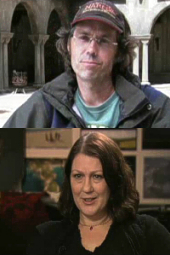 In its spectacular setting and storytelling, Prince Caspian proposes a unique blending of live-action and CG animation. So, Animated Views was anxious to talk with the movie’s VFX supervisors Dean Wright and Wendy Rogers about how they made the magical world of Narnia really take life right before our eyes. Both VFX wizards are no strangers to the company of Andrew Adamson, one having worked on the visual development of Shrek and the other having been part of the first chapter of the Chronicles.
In its spectacular setting and storytelling, Prince Caspian proposes a unique blending of live-action and CG animation. So, Animated Views was anxious to talk with the movie’s VFX supervisors Dean Wright and Wendy Rogers about how they made the magical world of Narnia really take life right before our eyes. Both VFX wizards are no strangers to the company of Andrew Adamson, one having worked on the visual development of Shrek and the other having been part of the first chapter of the Chronicles.
But that’s not all about their respective credits!
Dean Wright’s been involved with motion picture VFX for over a decade, on such prestigious projects as Titanic, What Dreams May Come, Lord of the Rings: The Two Towers and Lord of the Rings: The Return of the King, all Oscar winners for their innovative effects work. In fact, the Michigan native enrolled in the University of Arizona film school to pursue a career as a filmmaker. After completing his studies in 1986, he secured his first job on a western movie-of-the-week entitled Desperado. Relocating to Los Angeles in 1989, he soon landed work with one of the industry’s most prominent directors, James Cameron, on Terminator 2: Judgment Day, which went on to win the Oscar for Best Visual Effects. The rest is history…
And, as for Wendy Rogers, she has a background in both live-action and animation since she was involved in animated features like Spirit: Stallion of the Cimarron, Sinbad: Legend of the Seven Seas and Flushed Away for DreamWorks and in Batman & Robin, her second Batman movie since she made her debut working at Pacific Data Images – now PDI/DreamWorks – (Batman Forever, Waterworld). A native of Melbourne, Australia, she majored in business studies as a student in Brisbane. She began her career in computer programming before segueing into graphic design and visual effects. She moved to the US in 1991 and first worked as a senior animator at PDI , where she first met another rising visual effects talent, Andrew Adamson (first working with him on Barry Levinsonʼs Toys). Her early animation and CG work includes such live-action credits as Oliver Stoneʼs Natural Born Killers and Brian de Palmaʼs Carlitoʼs Way, as CG supervisor on the epic Waterworld and as digital artist on Peter Jacksonʼs 1996 horror film, The Frighteners, before joining DreamWorks in 1997 on Shrek.
So, let’s move forward in time, 1300 years after the first chapter of the Narnia Chronicles, and discover a whole new world…of Visual Effects!
Animated Views: What were the main challenges of Prince Caspian from the VFX point of view?
Wendy Rogers: It’s a very big film, obviously. There’s an awful lot of shots and an awful lot of characters. There were two of us, Dean and I, and early on, we separated out which sequences we would supervise. I took on the CG test development of all of the characters for the vendors here in London and Dean actually ended up being gone in New Zealand. For the entire post-production period, he worked on the miniature shots for the castle environment. Technically and creatively, we also wanted to raise the bar regarding the first film. I couldn’t work on The Lion, the Witch and the Wardrobe, by the way, but I thought that there was an amazing work on that film and that Aslan was really successful.
On Prince Caspian, we were working with different vendors and we all wanted to exceed the level that had been set, if we could. You know, Narnia is a different place in this film that it was in the first film. A lot of time has passed and there’s a lot more variations amongst the characters who are a little “wilder”, if you like. Howard Berger, special make-up, had done a lot of variations for the minotaurs, the centaurs, etc, with their armors and their particular look. So, we needed to continue with that into CG as we put legs on those characters and then also on the crowd characters that we did, we needed to have a lot more variations. So, all of that was challenging: some very big sequences to sort of populate and tell a story through some characters that we really wanted the people have a connection with at the same time.
If you look at the work we were doing in the battle in relation to the Reepeechip character that we were doing as individual animation, there were very different kinds of work to do. Obviously, also, a lot of work was done on Aslan. He’s not in the film as much as he was in the first film, but when he is, we wanted him to really count. So, we worked very hard to make him feel very physical and real, that he’s really there, interacting with the other characters. I think we were particularly successful with that, with the conversation that he has with Georgie/Lucy in the film and his very subtle, emotional acting, which is very hard to do with a CG character. And then, of course, the River God was always gonna be a challenge. Not a lot of shots, but very big shots – very hard to do. But I think, ultimately, very successful!
Dean Wright: I think overall we worked hard with making a much more realistic world. The film itself is a darker film and so, in creating Prince Caspian, we couldn’t rely on the fact that we were creating sort of a fantasy storybook type of movie. It tends to be a much more realistic film. So, all the characters had to look and feel a lot more real. There was a lot of integration between the real and the CG characters this time. We had a lot more environments we had to build and each shot itself was going to be a lot more complex and more full of FX challenges. So, right from the start, we knew we would have to work hard on that! It was a marathon!
AV: There is far more interaction between live characters and CG characters.
DW: Exactly. In the first film, we had Lucy come in and grab the top of Aslan’s hair and sort of walk with him, and then she hug him for a brief moment. In this film, they do that: they hug, they grab each other and then they actually fall on the ground. It’s just one example of this kind of interaction. We did that a number of different ways. Obviously, there was a lot more work from the CG guys, they built a much more realistic Aslan. The first one was already spectacular but they topped it! And we had Howard Berger build a half-Alsan. An actor and Howard himself sometimes would get in. Lucy would actually tackle the actor in this suit! So, we were able to use any of the action when she gets in contact with him, but everything else had to be replaced with a digital fur. That was just one step. We also had Susan jump on the back of a centaur in full gallop, we had all the Gryphon interaction we talked about, and much more moving centaurs that we had to add the bodies to, fauns leaping through the air, in the same style as the latest James Bond movie!
But for me, the most important is getting the best live action element. If you get it, it works. I don’t care about the CG work – it just works! The trouble is when you don’t get the live action element. Then, you’re struggling to make it work. So we were very fortunate that we were given the time and energy to plan and shoot, to make sure we were able to get the best. We had much higher quality stuffies built, to give us lighting reference on set so that we get CG lighting examples for every shot. We brought in HDRI technology on the film for every shot – not just some shots. Anything where you’re doing a CG character, we did an HDRI capture and sometimes multiple captures as the lighting condition would change through the day. We constantly were on our guard to get the best effects we could.
AV: Wendy, you mentioned Reepicheep. Can you tell me how your approach this very special CG-animated character?
WR: We knew who he is from the book and from the script. We knew his attributes. They didn’t cast a voice until quite late in post-production. So, we had to do all of our initial character development and character build without a voice. We started with thinking about what the character looks and then we went into 3D and worked on modeling and rigging. He’s 22 inch tall. We worked very hard on keeping him with mouse-like qualities and still we had to allow people to feel connected. He’s got acting and dialog, and at the same time, you’d believe he’s still a mouse. We had to find the balance between how much you let him take on human physicality and how much you retain of his mouse-like nature. So, we worked very hard on that, even before we had the voice. We worked on run cycles, on how he might move from a quadriped to a biped, how he fights and so on.We explored as much as we could and then of course, once you got the voice reading, you really start to work on who this character is and how he delivers his thoughts, how he acts based on the way he’s saying things. Eddie Izzard brought so much for that; he was really great!
AV: Another impressive character that you had to deal with was the River God, in the bridge sequence.
WR: We did that with Scanline VFX in Munich and Los Angeles. They had worked on Poseidon and couple of shots in 300. It’s a small company but they have a particular piece of software that they developed called Flowline. It’s a simulation package that’s really quite powerful. I’ve met with Stephan Trojansky who is their VFX supervisor and sort of lead developer last year. The difference between working with them and any other vendor is that they have the tool. You don’t have to spend all the time developing the tool. You just start working and work creatively with them. The River God was a very hard thing to do because you want to retain all of the force of something feeling like it’s real water and that’s behaving with all the physical properties of water, but it’s actually kind of a character that you can read intention and you can sort of recognize as a character and you have some way to focus – that it’s not just kind of a nebulous thing. Obviously, it was about twenty shots, but they’re all very big shots. So, it’s quite a lot of work to do.
We had started with a concept done by the Art Department of what this might look like. Then, the sequence had been pre-viz’d really extensively – really great pre-viz, actually. So, you know what he needs to do, and you know what he needs to look like and getting it done takes an awful lot of work because you need to embrace the organic nature of the water and bring something to the process as well. You can’t try to control it entirely or it will stop looking like water. It was a lot of actual physical hard work as well. We shot in Slovenia, a beautiful location, and the shoot was really great. Then we had to put the shots together. There’s a shot where the River God lifts the bridge up out of the river. You know, the bridge was in the river. It was a physical bridge that they built. So, you have to clean all of that out and put a CG bridge instead. Also, it was complicated because the Telmarines crowds on the bank were done by Framestore and the Narnia crowds back by the trees were done by MPC. So, some of the shots had three vendors working on them. That added some complexity to an already complex shot. But ultimately, it was very successful I think.
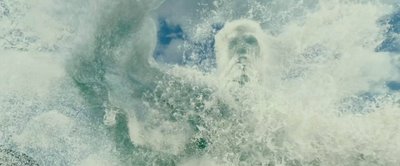
AV: Do you see any difference between CG animation for a live-action film and CG animation for an animated feature?
WR: There’s actually no difference in my mind, particularly between a CG animation like Shrek or Flushed Away and the Reepicheep character. With any character that you’re hand animating, the key for me is: who are the characters? How do they act? And then, you get them a backstory, and you get them what needs to come from the scene. Take Reepicheep. He’s very honorable. He really believes in his role as a knight of Narnia, even almost too seriously at times. He doesn’t realize that that’s what makes him funny. And so, you know who he is, and you hear the lines. Andrew is a great director in that sense. Then, you get an animator to do key frames. And there’s no difference between key frames for Shrek. It’s just that Shrek is a different character, so he would do different things, in a different way. But the technique, physically, is the same.
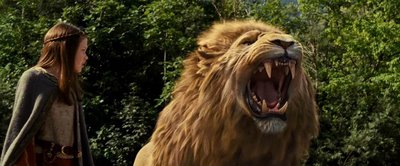
AV: So, that’s about single character. But on the other side, we have huge battle scenes. Dean, one of the most memorable sequences of the film is the Castle Raid. How did you tackle that?
DW: For me, it was probably the most challenging sequence I worked on, specifically on the Gryphon flying section of that. I’ll tell you why. First of all, just the idea of taking the kids and having them fly. You know, so many movies have done flying characters and with various degrees of success. This is happening right in the middle of the movie and sets up an enormous, spectacular battle sequence which is the Castle Raid itself. We wanted to make sure it looked and felt as real as possible so as it wouldn’t pull you out of the movie. It’s not that kind of green screen sequence. We didn’t want to do that. We wanted the sequence to pull you right into the movie, into the drama. So, how do we make the character look and feel like he’s really flying? For the most part, the Gryphons would carry the character. So, how do the Gryphons do that? We took the anatomy of a Gryphon and got Ian Menzies, who is a motion control genius, to build for us a motion control rig that would replicate every move that a Gryphon would make, from a head turn to a wing flap, to a body twist, to a back leg drop: anything that the Gryphon could do, this rig had to replicate and move the actor in the exact same way, as if an animator was puppeteering that actor.
That was just the beginning. Then, we had to pre-viz out the whole scene, basically, so that we knew what the action was going to be. And not only pre-viz it but take it almost to a final animation stage with a CG double and end up with the actor. Then, once Andrew Adamson was happy with the shot, we would go down to New Zealand where we had the miniatures all set up and we would run the movie to the miniature to be sure that it actually looked and felt real and as impressive as we wanted it to be, because we had an incredibly dynamic miniature of this castle.
The castle design itself is fantastic, with these tall columns, and we wanted to take advantage of that. Once the moves were set by the team down there, we watched how the moves worked and cut them a little bit to make them even more dynamic. That move would then come back to us in Prague, where there was this enormous soundstage where we had Ian Menzies’ camera rig and his Gryphon rig stationed and a team of very, very talented animators from MPC working on site, and Andrew. We would look at it and then Andrew would click the animation until he was completely happy with it. Once he was happy, we’d go to a guy named Andy Burrow, who had to figure out how to make this work between the rig and the camera. The rig couldn’t move in distance. It would do everything that the Gryphon could do except moving towards or away from the camera. The camera would have to create all this. So, Andy would have to recreate that dynamic set up with his tool set and then we would get back over to Ian, who then programmed the rig and then put the actor up on the rig.
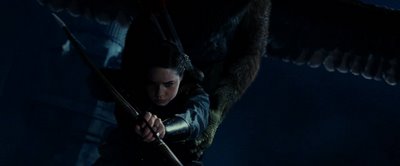
Then we had to show the actor what he or she was meant to be looking at, placed markers all over the set and told him “look at number 2” and he knew he was looking at a soldier that’s about to snip him; “look at number 3, that’s Edmund up there!”. So, he or she could actually act. Then we had all the elements we needed for the shot. It was an incredibly complex, time consuming and laborious process, but at the end of the day, we were getting amazingly good-looking elements that we were able to put CG elements upon and have them flying around the castle and sort of take you in a trip you’ve never imagined, in a very realistic way and I think it’s very, very effective. So, for each one of those shots, once we have the actors shot, then the visual effects company WETA Digital would have to layer all the different actions of the models that we needed to bring to life. In many cases, there were three or four different miniature passes to create any individual shot.
AV: Instead of relying on all-CG environments, you blended miniatures with CG. Can you tell me about that aspect of your approach?
DW: For me, the best visual effect is no visual effect. You have to choose the right tool for the right effect. When it comes to creating architecture, realistic stone and structures made of organic materials, I think having a miniature that you can look at and light and that you can match with a live-action set, you’re lightyears ahead of trying to do that CG. At this point, CG light has a CG-light quality. You can do it; it’s just a lot harder and given the time and the amount of work we had on the film, I thought we could get it much quicker and have much better results using miniatures. And with the fact that I could deploy the team that I worked with on Lord of the Rings, the team that has done King Kong – they’re my good friends – I knew we were in very good hands and that we would have the best results. And at the end of the day, if you look the film and the miniature work, I think you’ll be amazed not to be able to tell the difference between what was life action and what was extended. At the premiere, I was sitting right in front of Roger Ford and at the end of the movie, he had a big, big smile on his face and said “well done!”
AV: Can you tell me about your work on the final battle?
DW: That’s Wendy’s sequence. But from my point of view, I can tell you that I helped with initial planning and pre-viz design, including choosing the vendors. Then, I was on set supervising for Wendy when I was with second unit and she was with main unit, or when she was in London. So, she can tell you about the shooting and the post-work on it. It was indeed challenging because we didn’t want to replicate the type of battle that was in the first film. We wanted to come up with something new. Starting with pre-viz ultimately helped the execution. You see something incredibly different and new and the choice we did in making it innovative was very demanding both on live-action and VFX. In creating something new, we created a battle that goes on multi-levels, that isn’t just on a single plan. There are the caverns down below, and up above we had to create an enormous pit that captures a huge group of the Telmarine cavalry which made us create falling, CG environments; we have trees that come up at the end, and we have them interact with the ground, with their roots digging through the ground, then reaching up and destroying set pieces up above, and characters fighting. Again, the integration between the live action and the CG was brought to an entirely new level for the battle.
AV: How did you manage to deal with so many CG characters, even more than in the first movie?
DW: From my experience on the first film, we knew how to deal with always bringing the real characters as close to the camera as you can, but when we wanted CG characters, making sure we leave space for them. We learned a lot. Pre-viz set the stage for us in order to know what our plan is and then, once we had the plates, we did something we pioneered in the first film and that we used again on the second film, that is “posts”: taking the plates, giving them back to pre-viz, having them add it into the stuff we want and turning that over to the VFX companies so that they have a great blueprint of what to do. Also, there’s all the painstaking efforts we took to capture the correct lighting conditions and then build the variations in the characters. So, it’s not just “more characters”. It’s more types of each character of the different characters. So, it feels like an immense and varied army and not just a cut and paste army on there, also in bringing the camera into the action, not shooting it from the distance, getting right in there, not stopping the director from doing anything he thinks needed to bring the audience into the action.
WR: In any battle, it comes down to very human stories, very personal stories. Because the Narnians are fighting for their world, for their home, for their families, for their friends that have been killed over the centuries by the Telmarines. That makes any battle very personal. In Prince Caspian, we have the people that we’re following, the Pevensies and Prince Caspian themselves, going through their own character ark. It is a very personal battle that they’re fighting. They’re fighting for the same things, but they’re giving all themselves personally to do it. We’re not remote to that, we’re very close to that. So, the story goal for me was to try and have the effects give the scale of the battle – we’re still trying have it still real, physical and personal. So, obviously, in any battle where you have so many characters and so many different types of characters, all have their own quite unique ways of fighting.
We have a lot of animals, a lot of hybrid characters, centaurs, minotaurs and fauns, and the Telmarines, who have their own unique way of fighting, which is much more sort of mechanical. The goal is to keep the audience connected to that personal part of the battle, to the story that’s happening and to not question whether it’s real or not. You know, that’s always a challenge. In order to do that, we did motion capture for a lot of hybrids, fauns, minotaurs and centaurs, and also for the Telmarines. We captured a Telmarine fighting with a faun or a centaur so that we could populate the battle with a lot of individual kinds of fight. Pieces if you like, that you could look at and focus on – personal little battles taking place. Obviously, there was a lot of big moments and so, sections within the battle, like when the trees come to life, which was very challenging because you can’t motion capture anything like that. So, we needed to have them hand animated, including the horses. And no horses were hurt in the making, not even CG ones! We made sure they all got up afterwards!
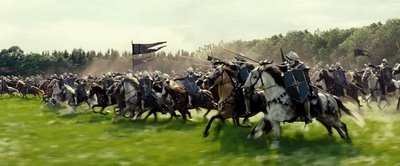
AV: How was it to work with a director who is at the same time an animator and an animated film director?
WR: It was great, actually. Obviously, I had worked with Andrew before. He’s terrific to work with. He’s very inspiring and he knows an awful lot! He’s very, very good at directing animation. He knows what he wants. I think that part of the VFX supervisor is to, obviously, achieve the vision of the director and Andrew is really good at being clear about what his vision is; he has a vision and he’s very good at communicating it. I learned from working with him every day and I loved it!
DW: It was very challenging on the first film because it was a little intimidating, the fact that the guy who was directing could do your job! And he did very well when he did it. But we learned on that film how to work together very, very well. I could use his experience to help and we became a very good team! And on this film, I just knew that he trusted me quite a bit and let me run with a lot of decisions and a lot of the planning and the execution of the film from an effect standpoint. I knew, having him on set, he would understand my dilemmas and needs and he supported me when I needed things. I think we only debated about blue screens every now and then, whether we needed one or not. When we had time issues, he made sure I got this time. He was very supportive all along the way, because, at the end of the day, he wanted this film to look even better than the last film. So, we got time and support and I think you see the result on screen.
AV: After supervising the VFX of The Lion, The Witch and the Wardrobe and Prince Caspian, will you continue your journey through Narnia on The Voyage of the Dawn Treader?
DW: No, I can’t. Actually, in this case, they started that movie while we were still in principal photography. So, they came to me and said: “who do you think would be best to take your reins?” and I couldn’t give anyone better than my very good friend Jim Rygiel, whom I worked with many, many times, and lastly on Lord of the Rings. He was my good partner, Academy-Award winner. So, hopefully, they’ll top us! That’s my wish!
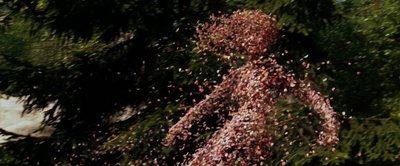
AV: Considering all these different kinds of VFX, and the amount of VFX, would you consider Prince Caspian a visual effect film?
DW: From the beginning, with the first visual effects where we ship you into Narnia, which is, I think, very innovative, you find you’re in a very different world. But the goal is, for the effects, not to ever overpower the story, overpower the film. It’s about about supporting the story, creating the supporting characters for the kids to interact with and for the audience to fall in love with, move the audience, make you laugh, make you cry, scary you and give you chills – and there’s plenty of that all along the way in this film. Because, ultimately, it’s a story about the kids and Prince Caspian, their journey and their inner struggle that they have to deal with. When they come back to Narnia, they don’t know why. They’ll have to learn the lesson that they need to learn, and each of them does. And when they do that, then they can actually help the Narnians regain their kingdom. Our job there is to help all that feel real, magical and help you escape from the world you’re in and go live in Narnia for two hours and twenty minutes!
Illustrated Movie Companion is available to buy now from Amazon.com
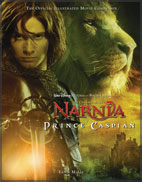
![]() [1]
[1]
With all our gratitude to Tim Sovay, Wendy Rogers and Dean Wright for their great help.
- [Image]: http://www.amazon.com/exec/obidos/ASIN/0061435600/animatedviews-20
Source URL: https://animatedviews.com/2008/how-dean-wright-and-wendy-rogers-brought-fx-to-prince-caspian/